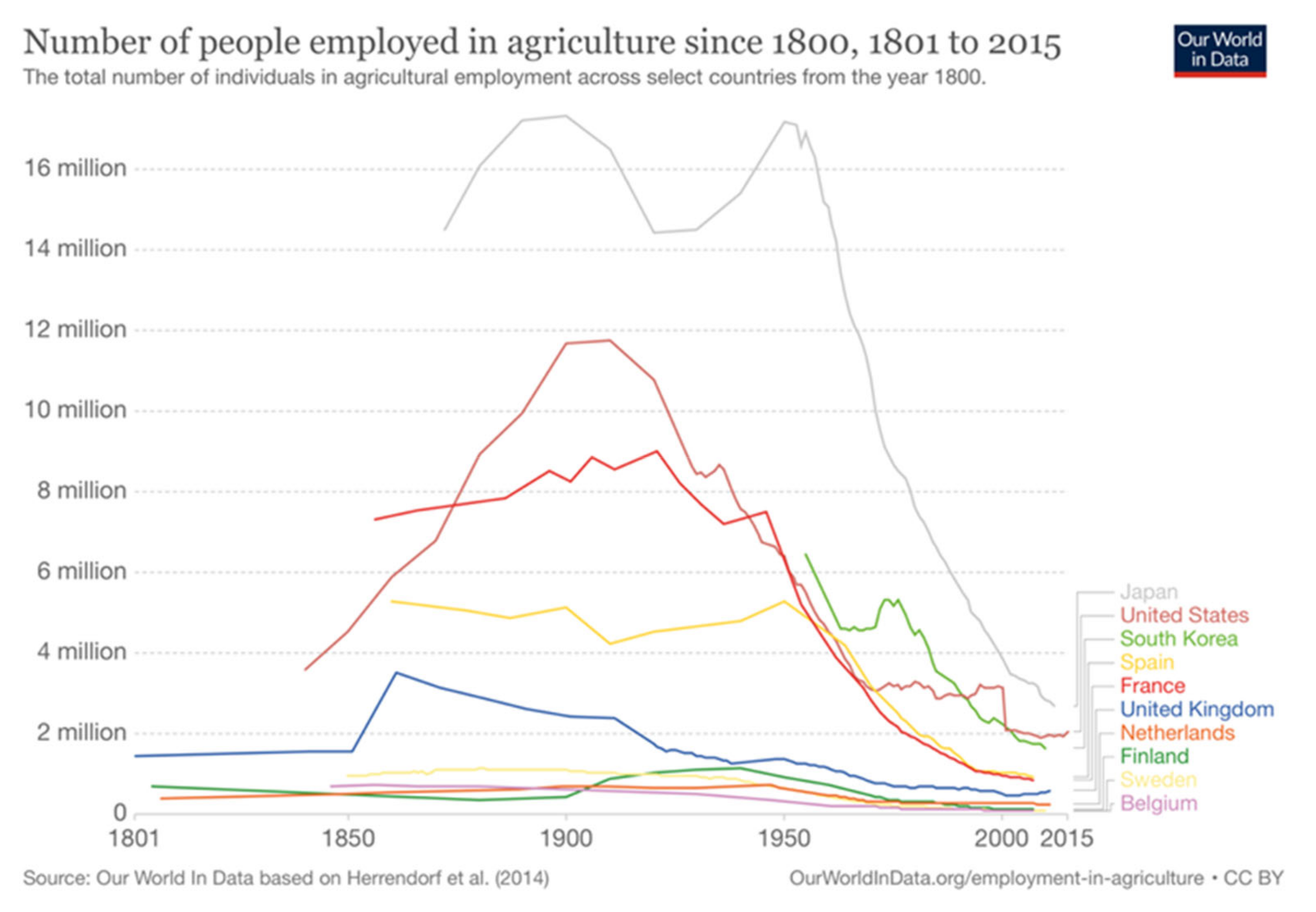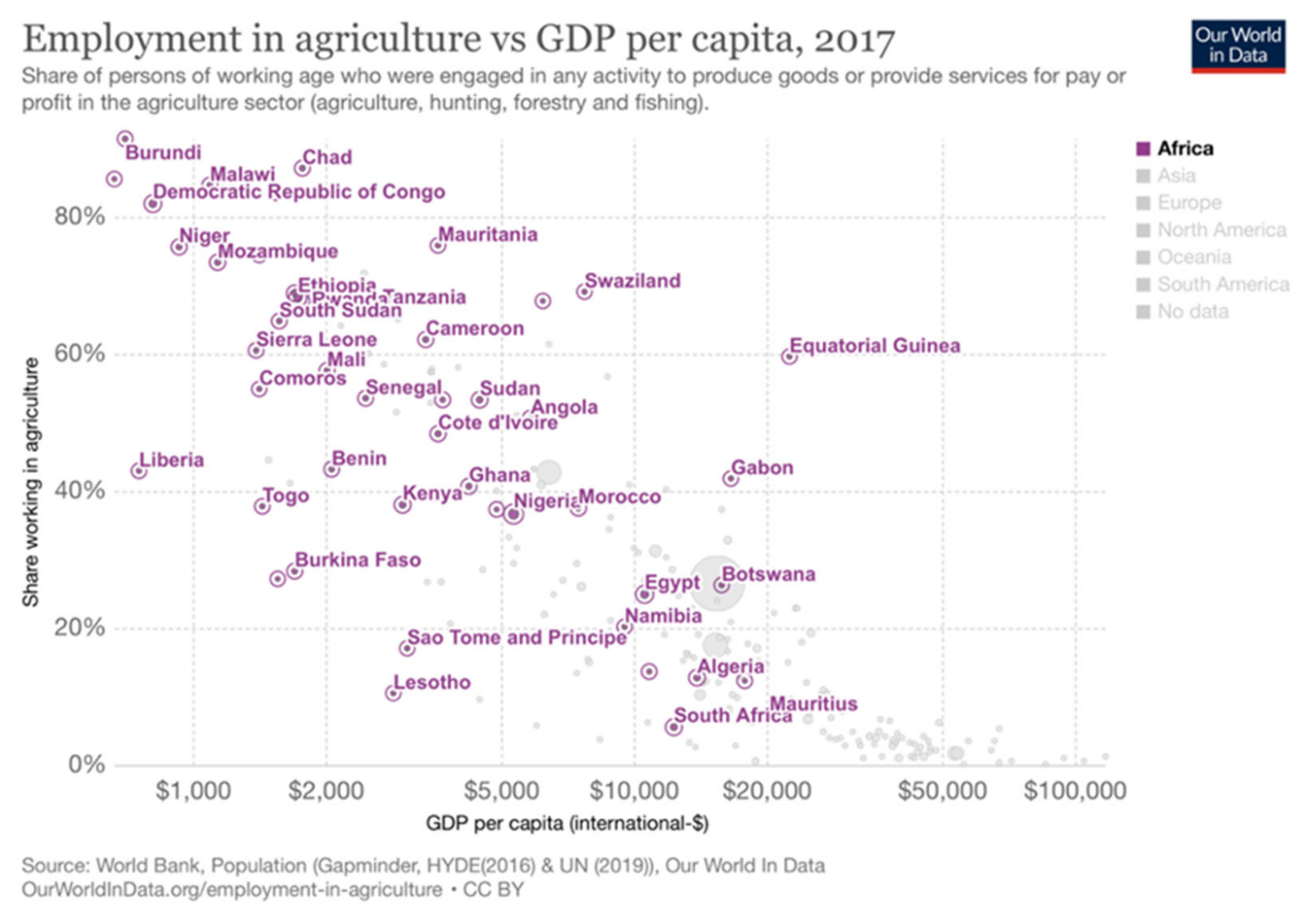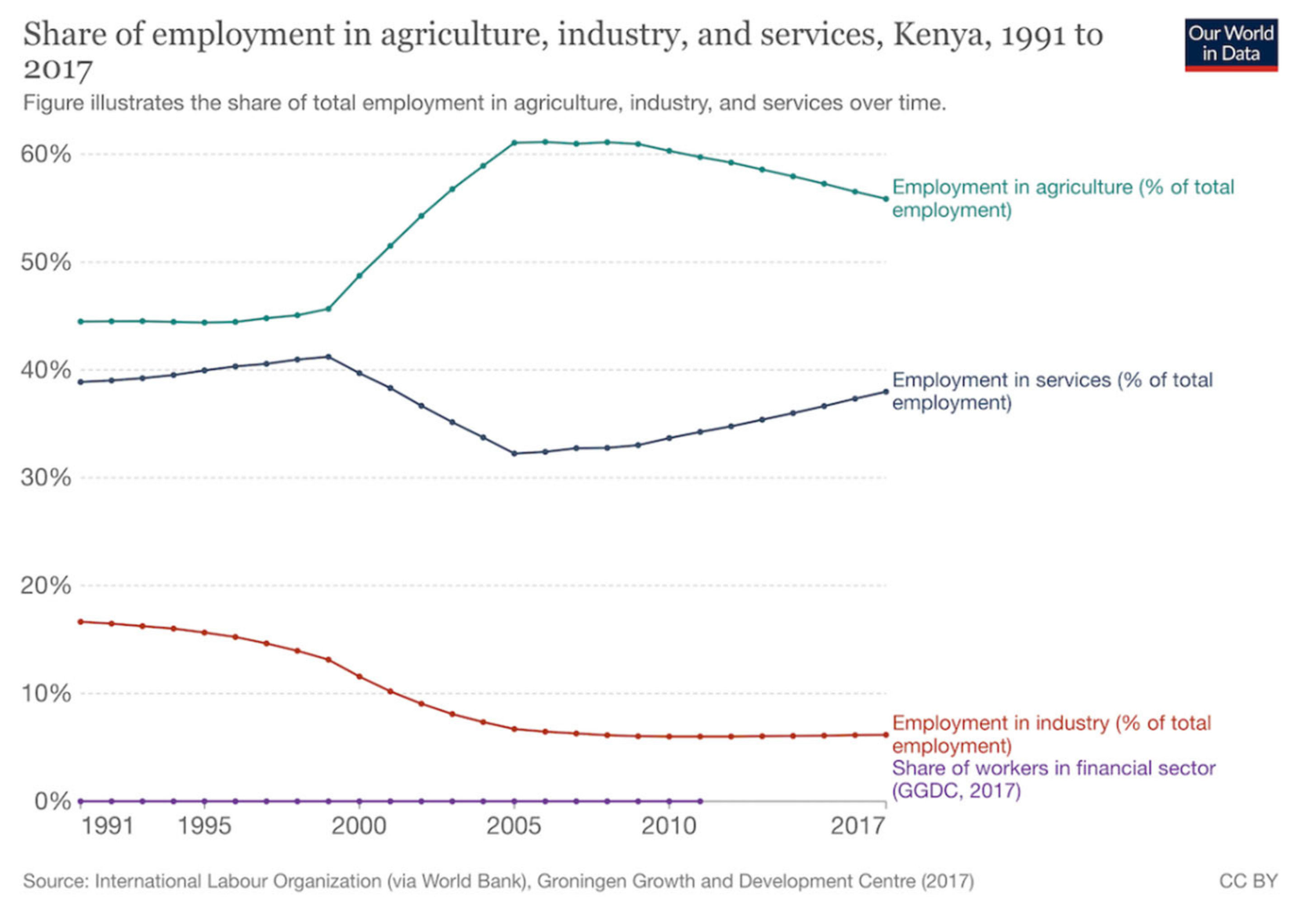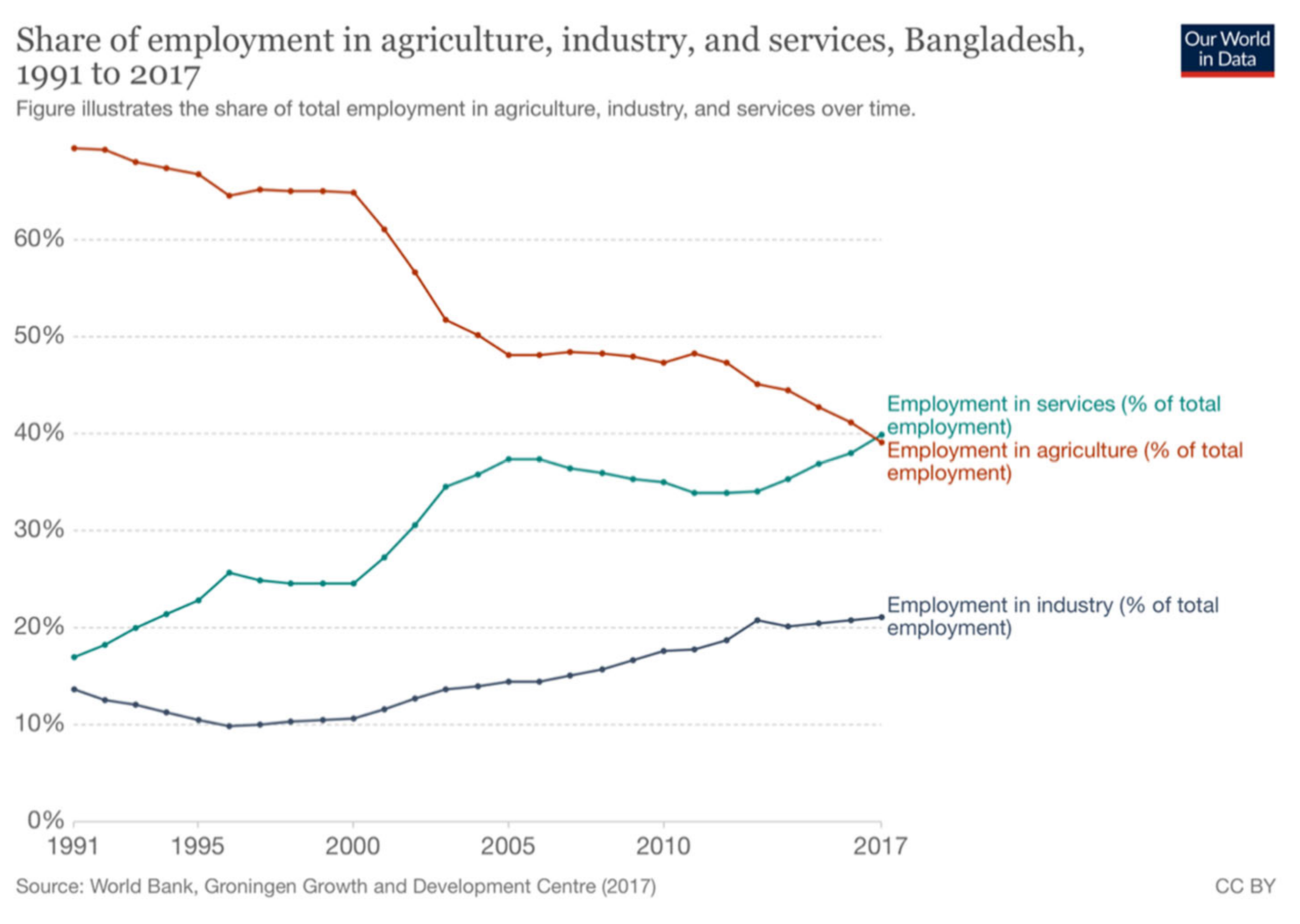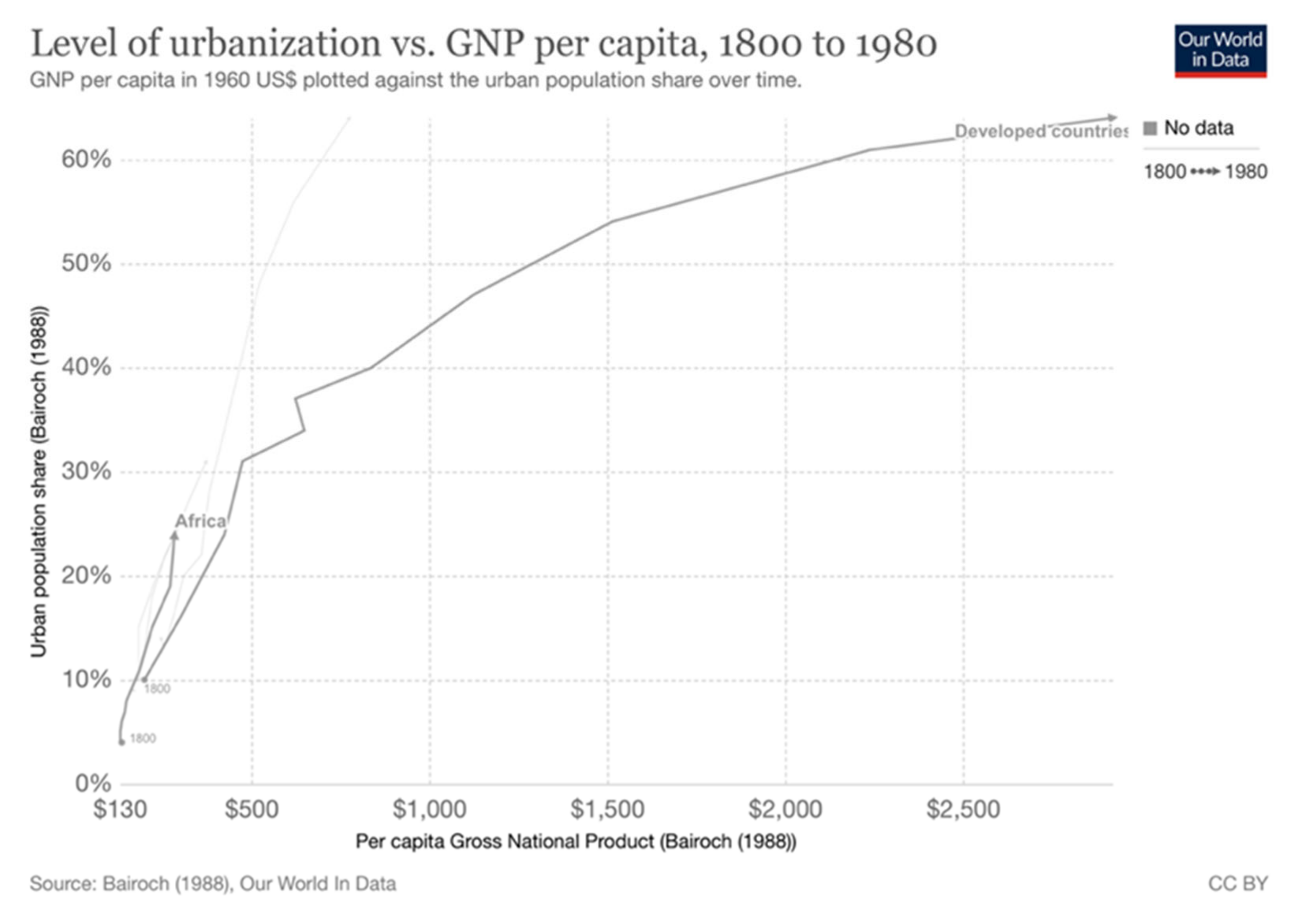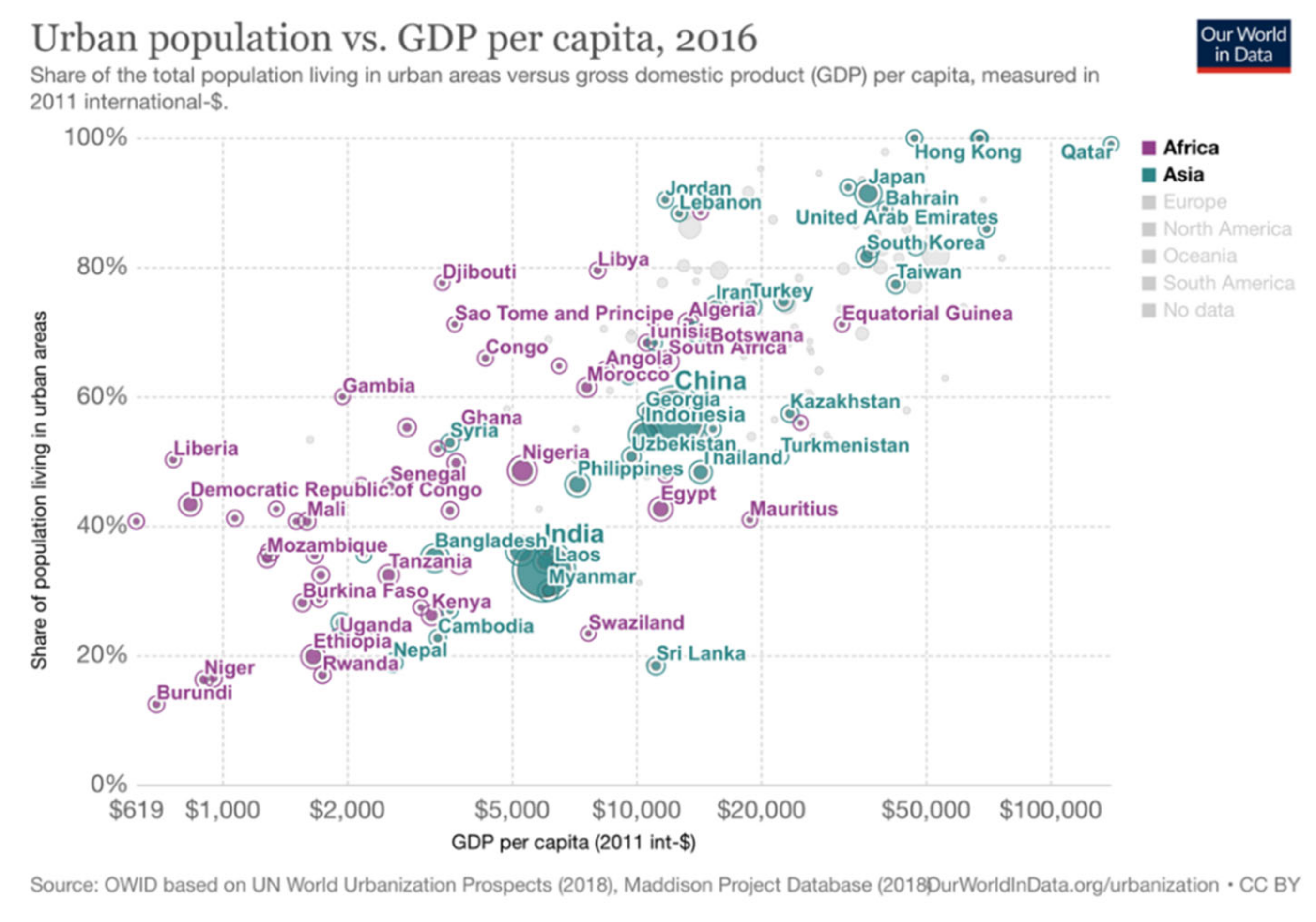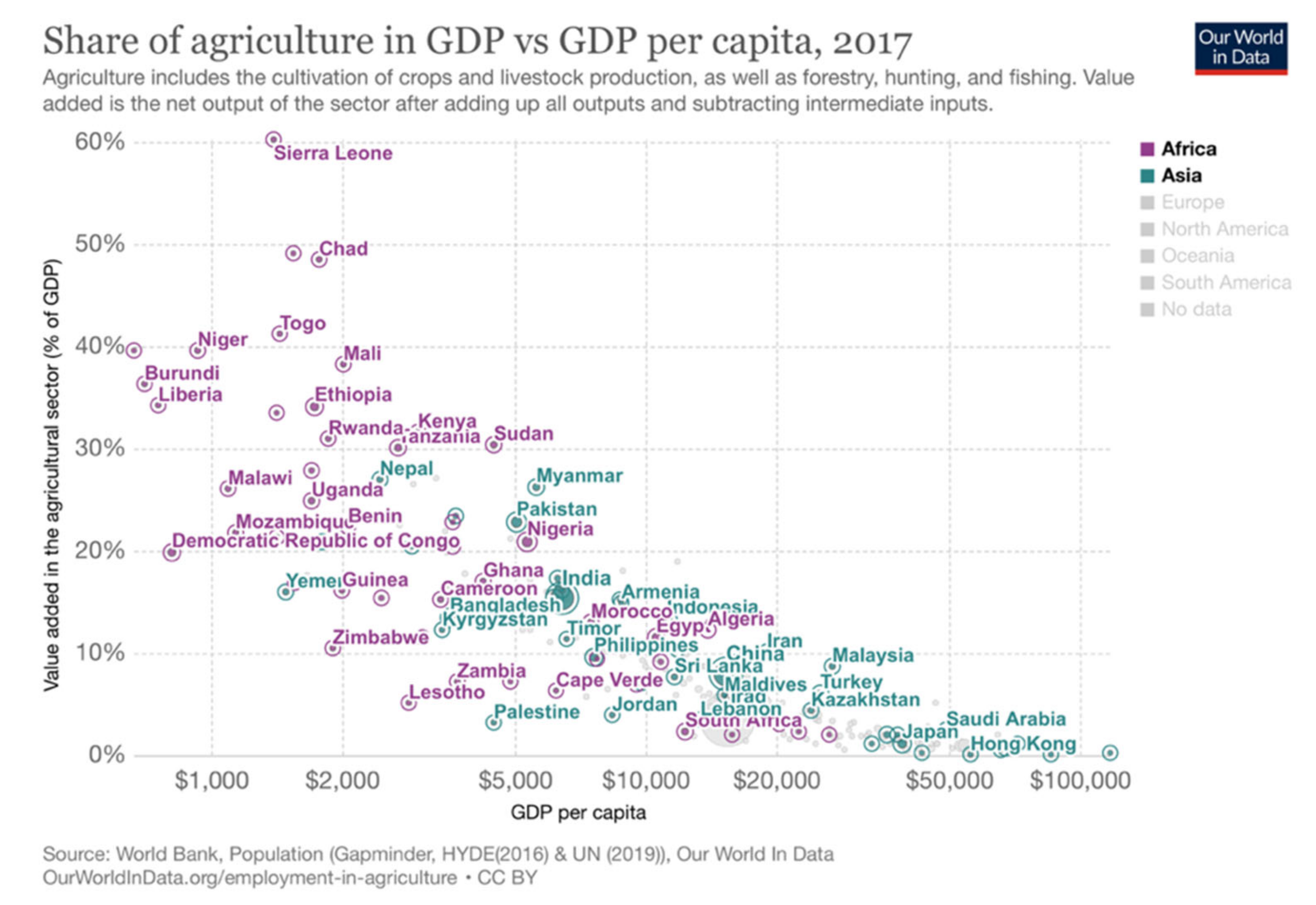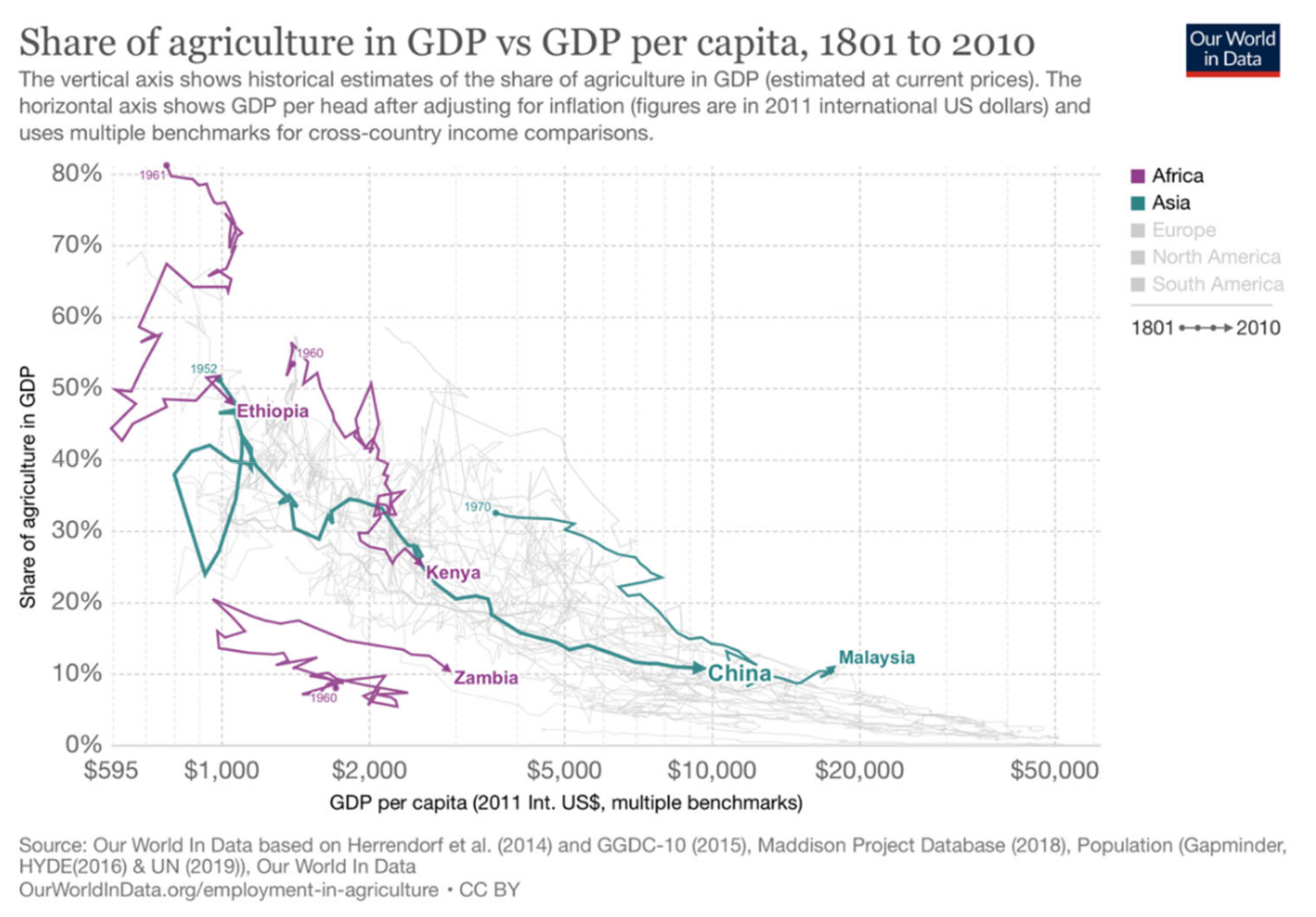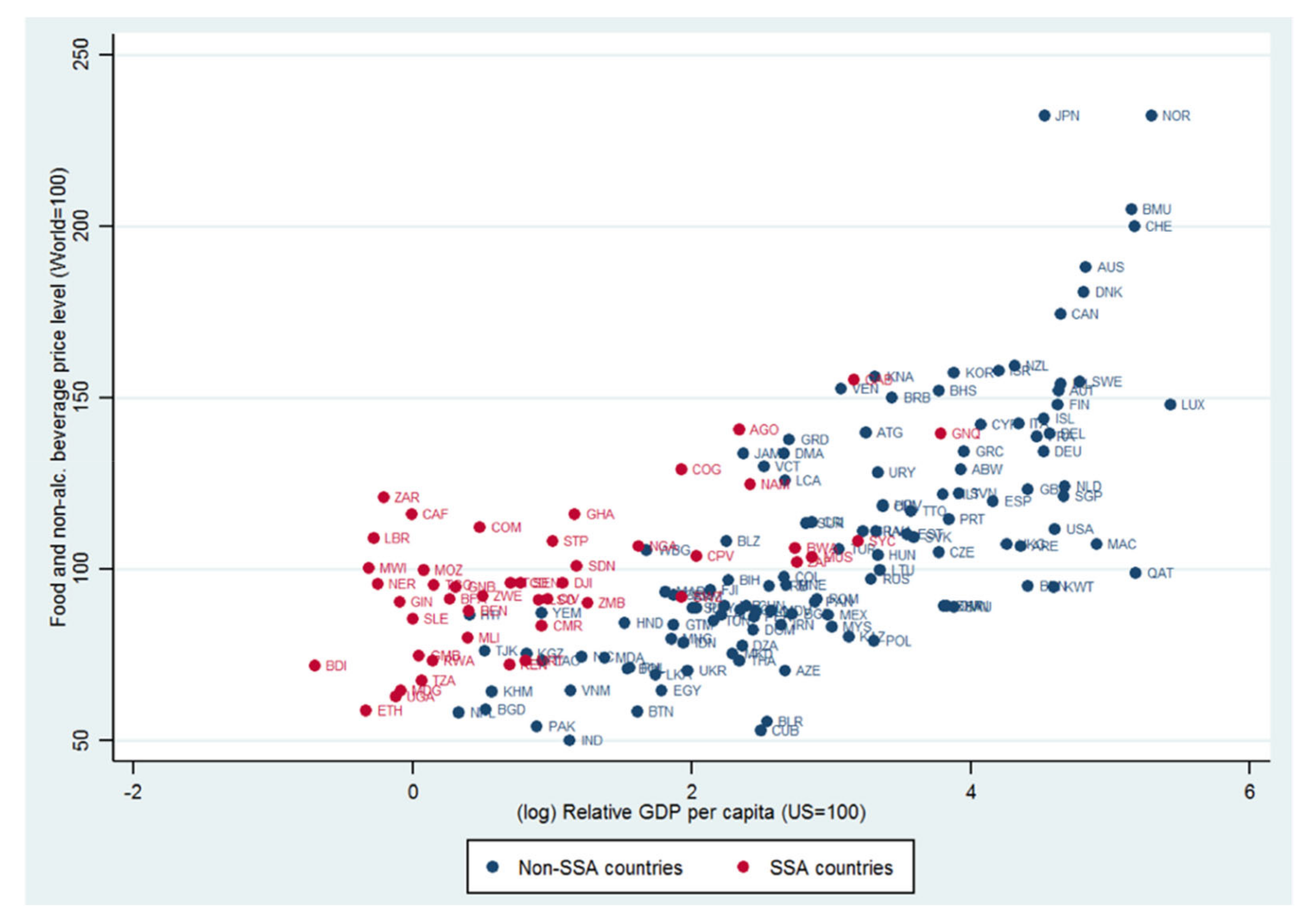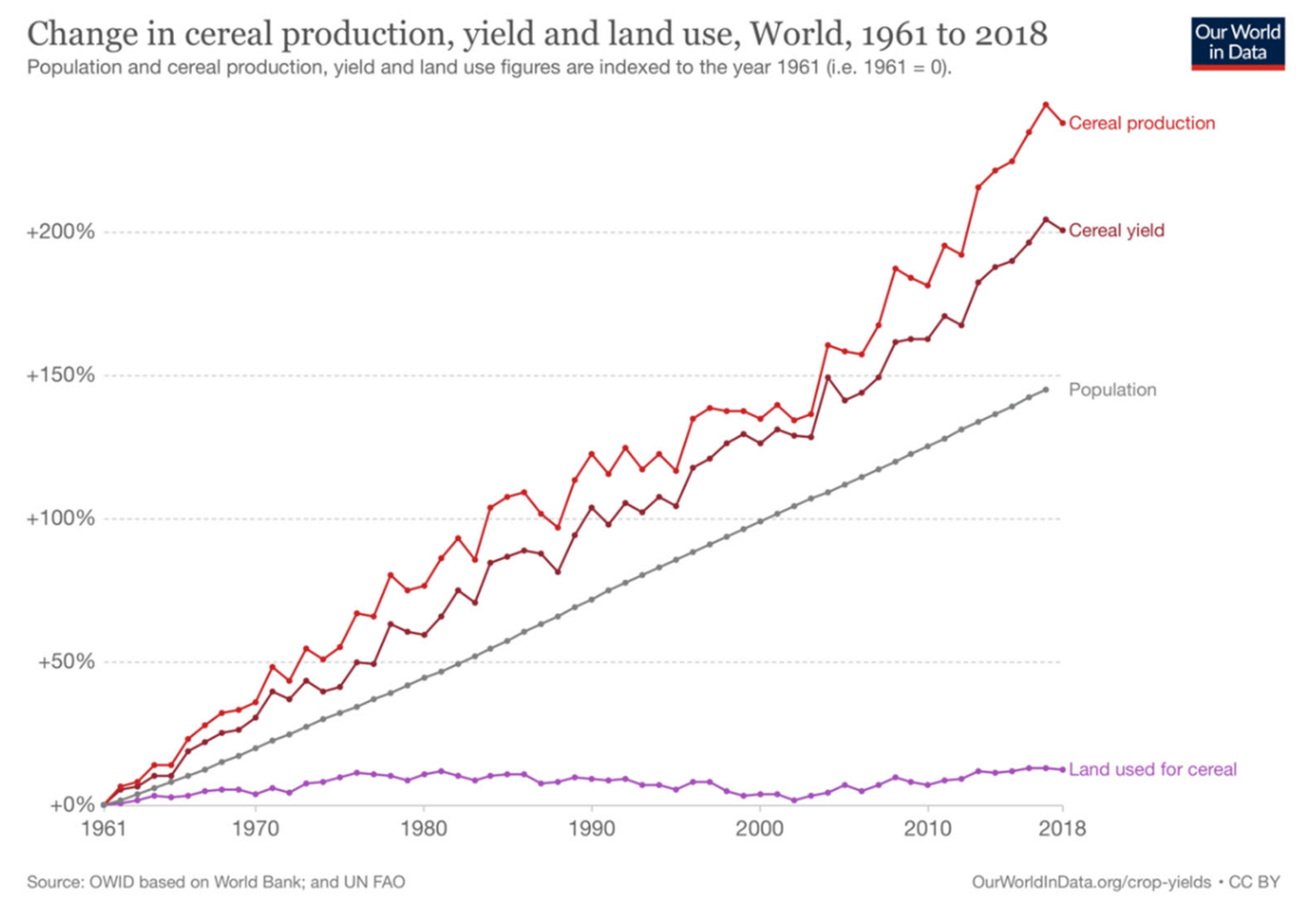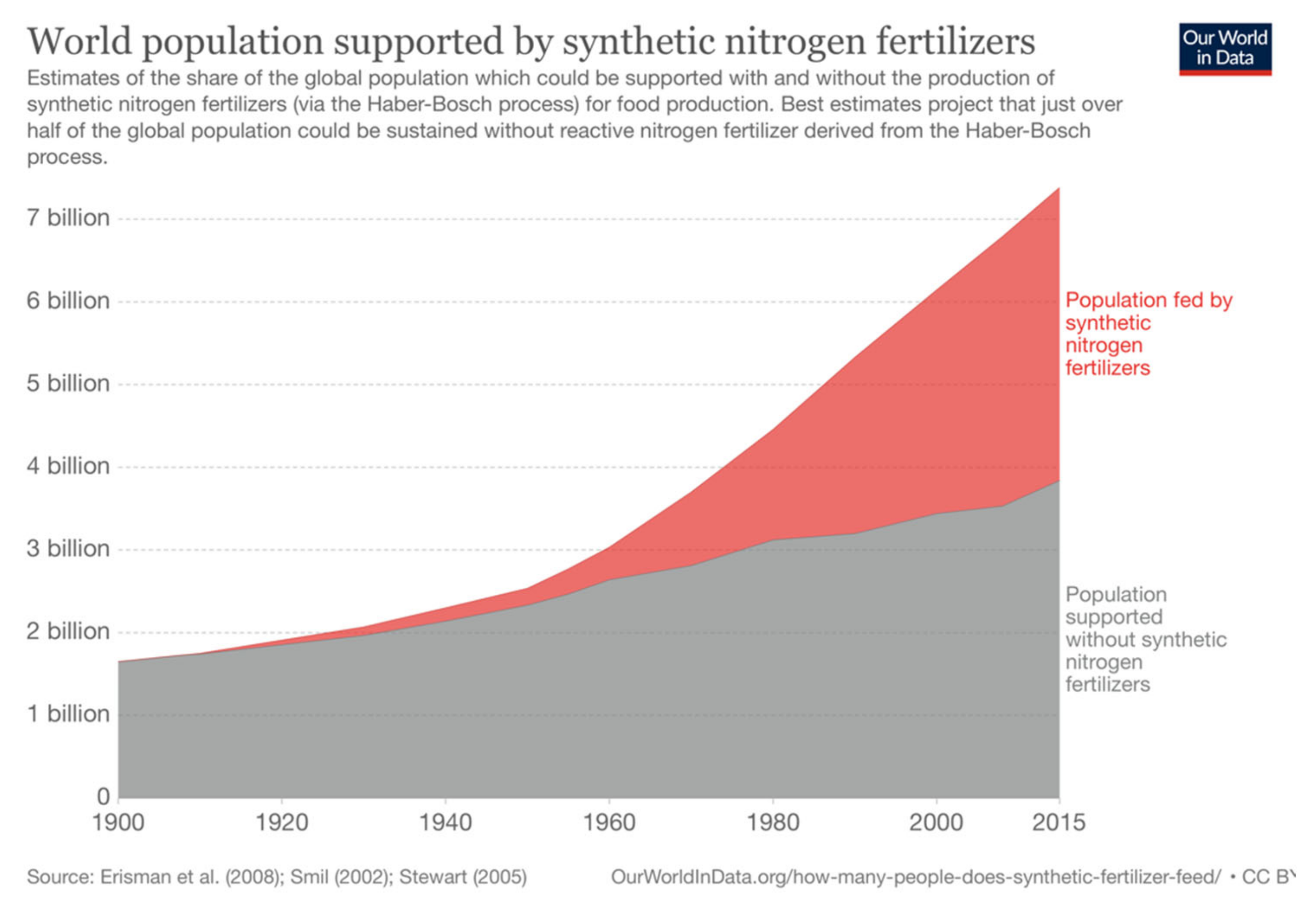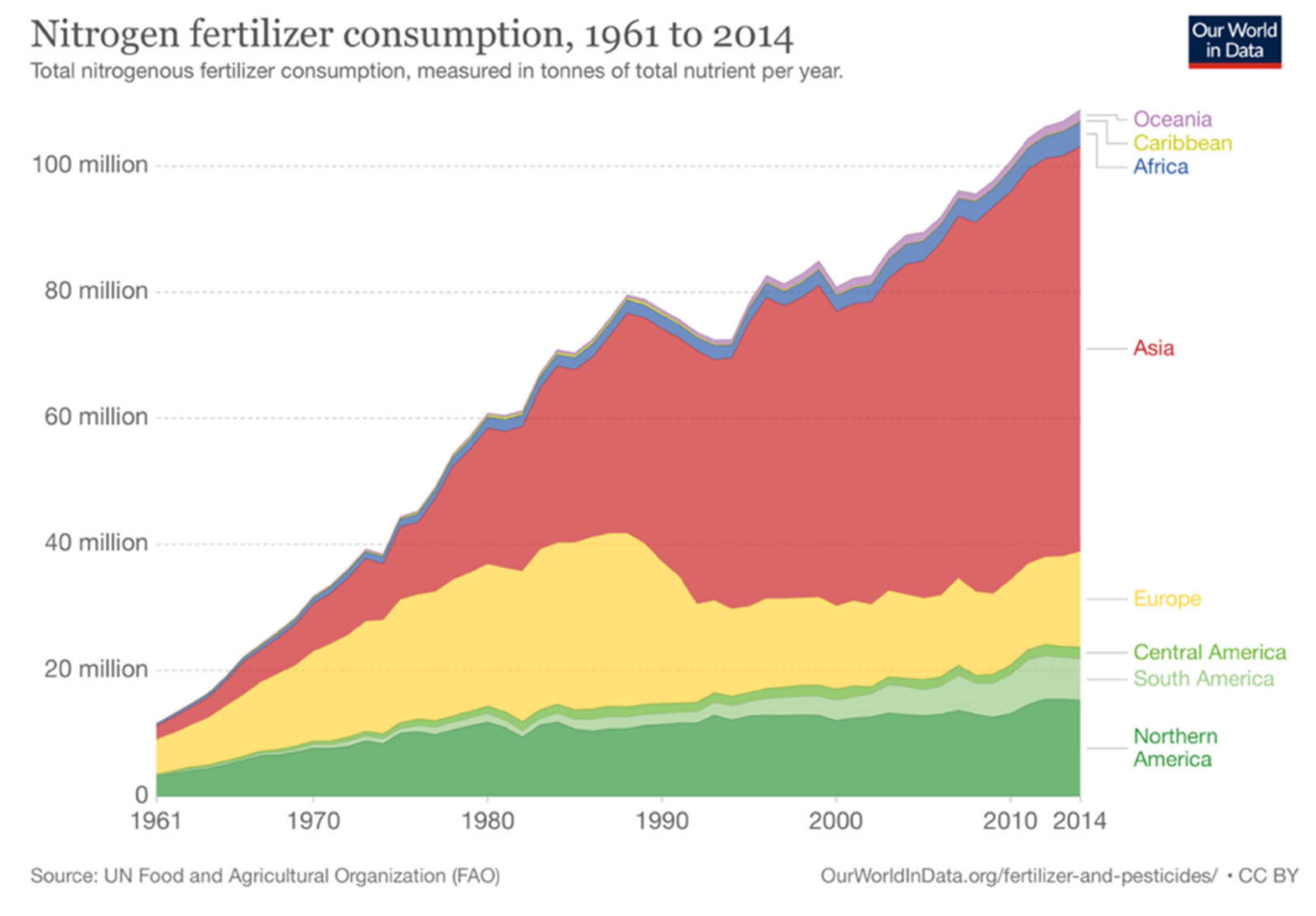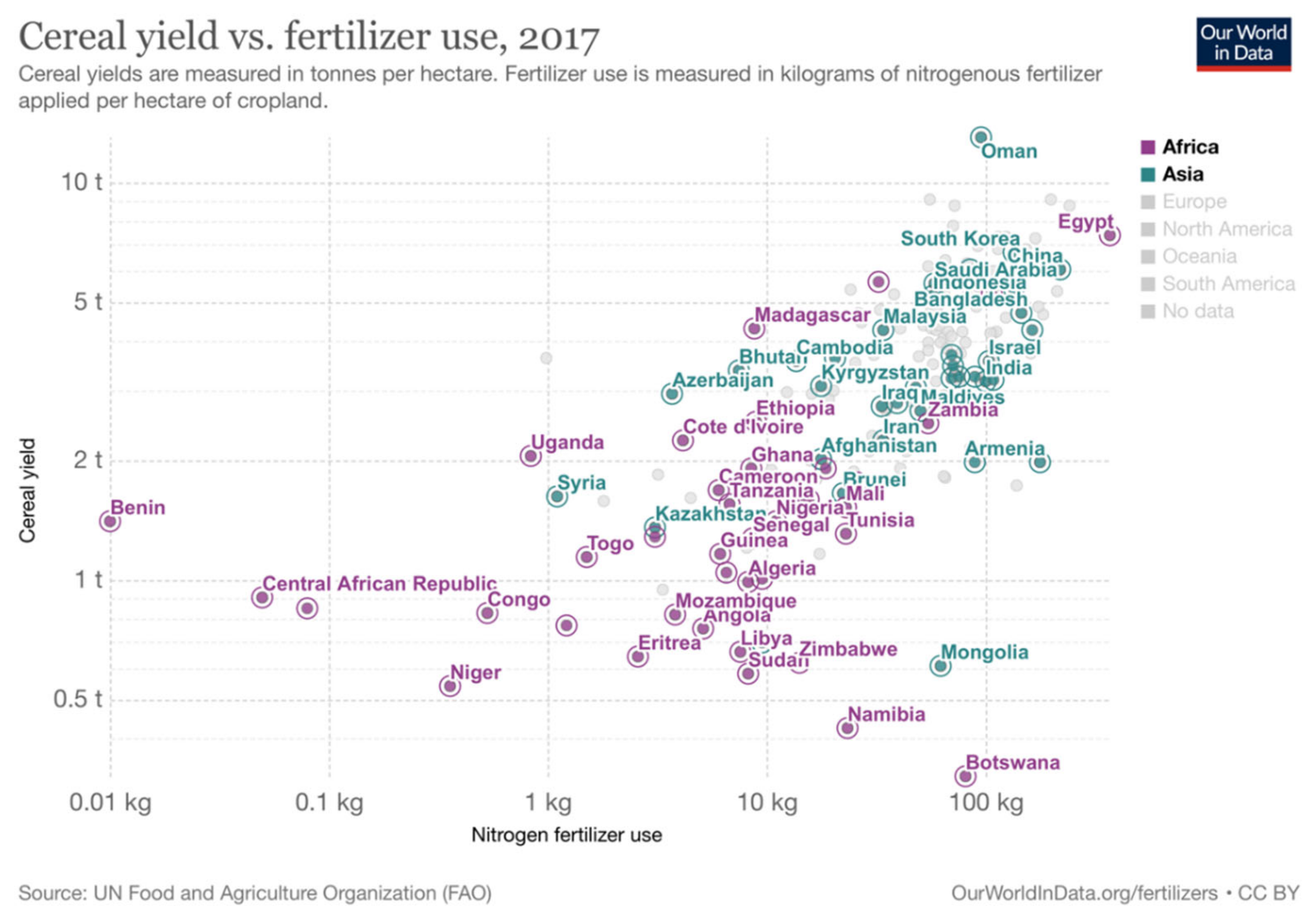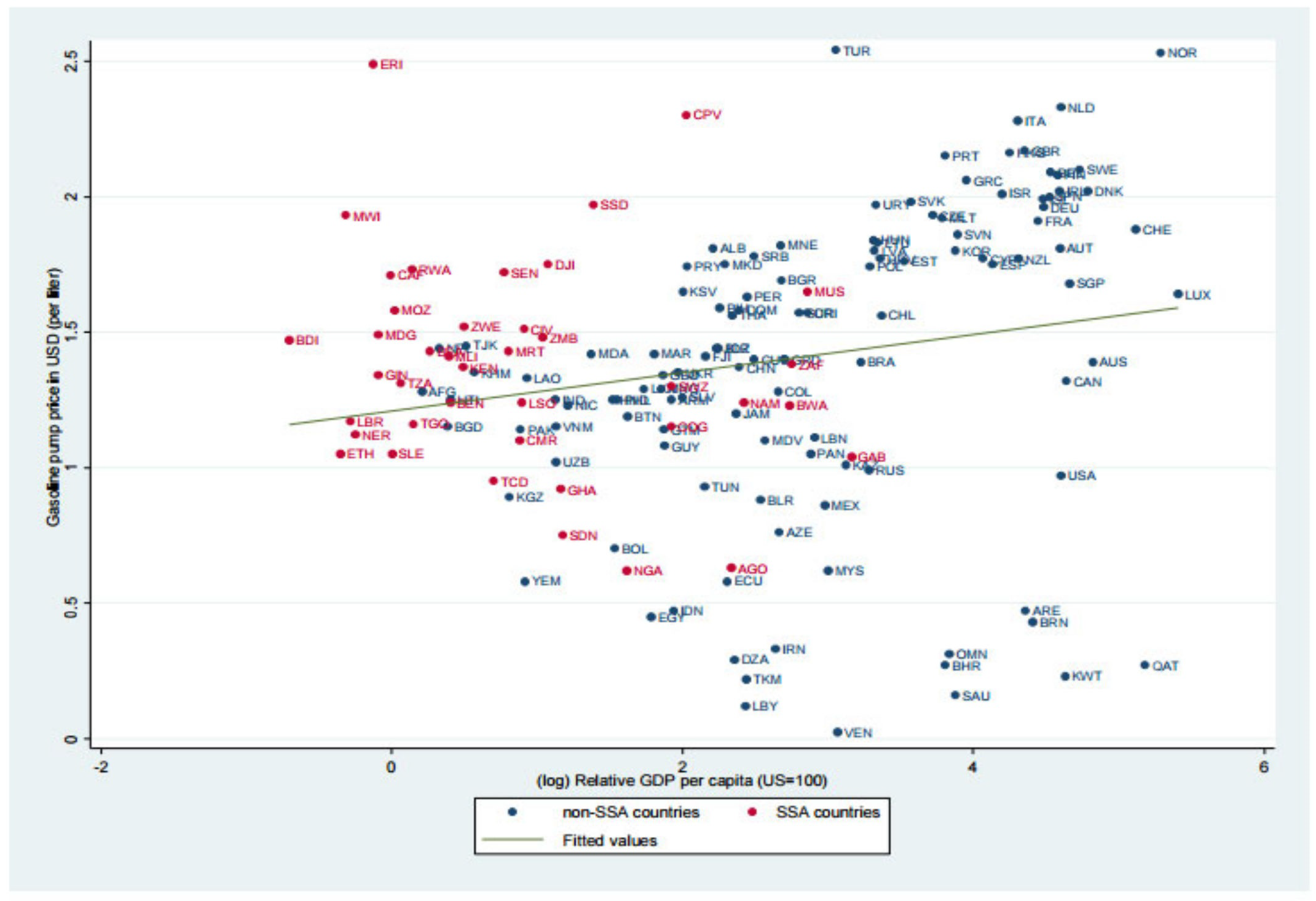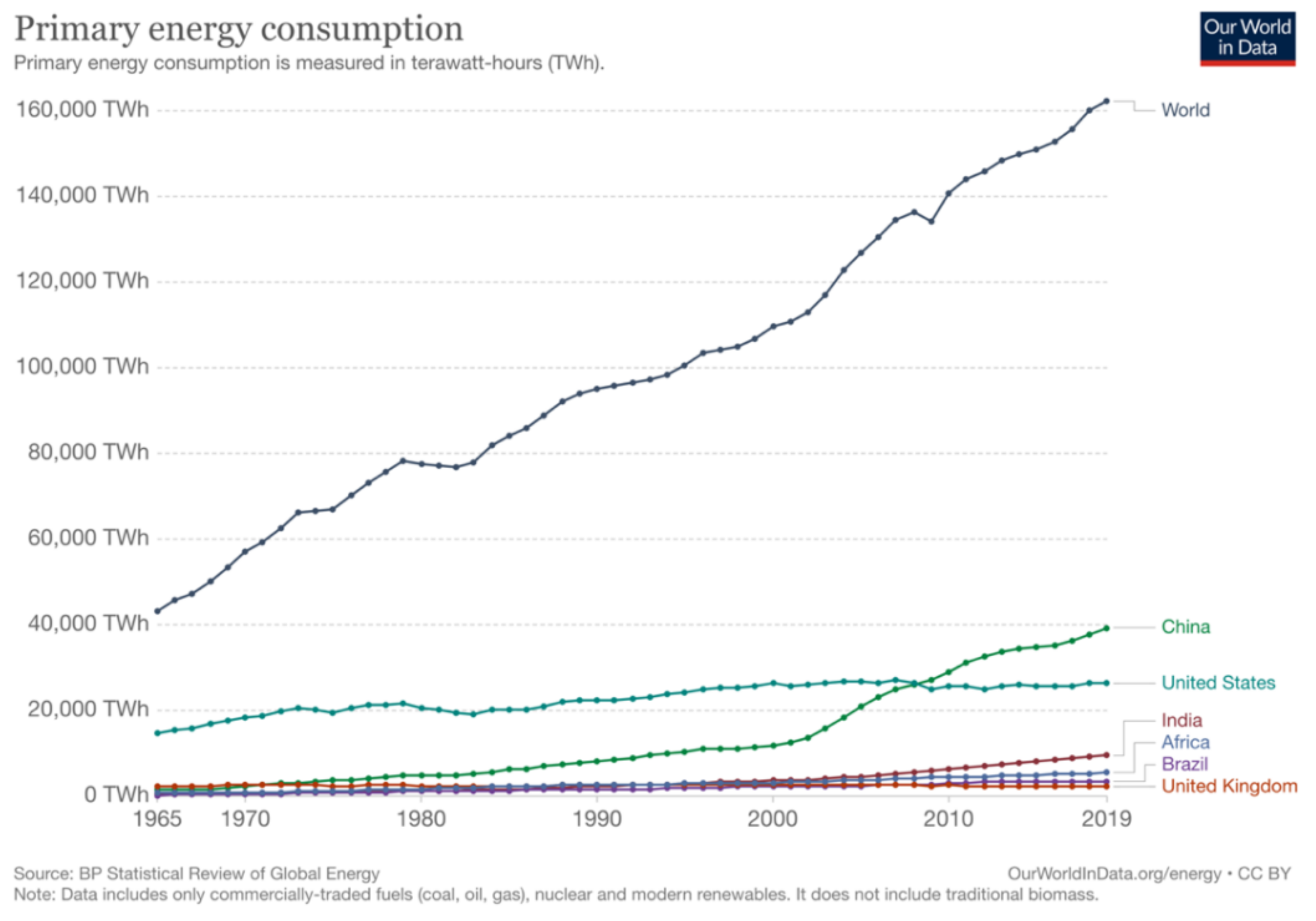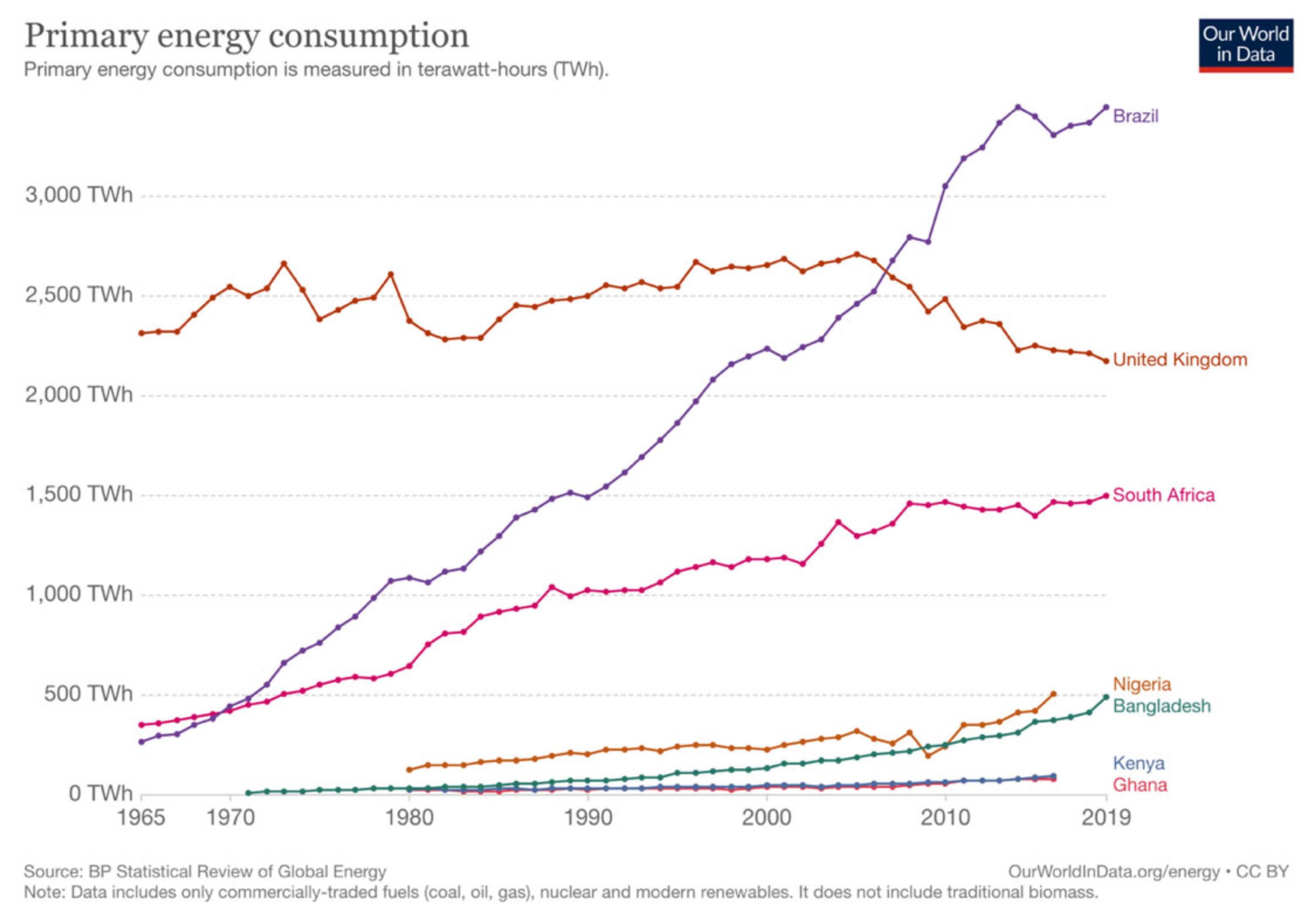As described previously, agricultural yields in Africa are low and food is costly, while the share of employment in agriculture remains high. How might this situation change? There are many interventions at the micro level that have been carefully studied, including access to better weather data, access to credit, and the use of new crop varieties. This section focuses on large-scale interventions needed to grow more food and to bring that food cheaply to urban markets. Each of the physical interventions described here—fertilizer, irrigation, roads, and cold storage—requires energy. For the process of structural transformation to get underway, African countries must produce energy for the manufacture of fertilizer, develop better methods of water control, improve transportation, and invest in cold storage. Countries have managed structural transformation in different ways but to date none have leapfrogged this process.
What are the drivers of the mix of renewable and non-renewable energy in the African context? Two factors dominate: the availability of renewable energy technology and the relative price of this technology with regard to alternatives in the non-renewables sector. At present, Africa cannot grow its economies on a “renewables-only” basis; technology for fertilizer production and roads necessarily involves fossil fuels, as I demonstrate below. This may change as new technologies emerge that are viable for the continent. Changes to relative prices are making renewables more attractive, but challenges with regard to intermittency, the high cost of storage, and cost recovery remain.
3.1. Land Use and Fertilizer
Since the 1960s, the world has grown increasingly larger amounts of food on a more or less fixed amount of land (
Figure 11). The rate of growth in cereal production and yield has exceeded population growth, thereby preventing famine and raising caloric intake in every part of the world. This is in large part due to the availability of synthetic nitrogen fertilizer, manufactured with the Haber–Bosch process. As
Figure 12 shows, almost half of the world’s population is sustained by yield increases generated by the addition of synthetic nitrogen fertilizer.
African agriculture, however, has not benefited from the invention of synthetic fertilizer.
Figure 13 shows cereal yields and fertilizer use in African countries as compared with Asian countries. In terms of global fertilizer consumption, Africa remains a blip; most of the increase in consumption is in Asia, where yields are 10 times or more those of Africa. Fertilizer use is on the order of 10 to 50 kg per hectare in Africa, as compared with 100 to 500 kg in Asia (
Figure 14).
For Africa to benefit from the use of fertilizer, it must make use of its reserves of natural gas. Natural gas is the most efficient energy source for the manufacture of fertilizer. Though a fossil fuel, it is roughly twice as carbon-efficient at generating power as coal is, while producing radically lower levels of water and land pollution. It occurs in many African countries including Algeria, Angola, the Democratic Republic of the Congo, Egypt, Libya, Mozambique, and Nigeria. Africa is estimated to have reserves of 624 trillion cubic feet of natural gas; using a share of these reserves to increase the production of fertilizer will result in significant productivity gains in agriculture.
The energy cost of producing fertilizers, particularly nitrate fertilizers, is high [
11]. Scientific estimates suggest that the scale and intensity of the production of ammonia, a key ingredient in fertilizer manufactured with the Haber–Bosch process, accounts for 1-2 percent of global energy consumption and 3-5 percent of natural gas output [
12]. In Bangladesh the power sector uses about 45 percent of natural gas, while the fertilizer sector consumes another 35 percent [
13].
3.2. Water Control
Water is an essential input to growing food. Irrigation has played a significant role in ending famines and raising food consumption in India, the world’s largest agricultural water consumer at nearly 700 billion cubic meters per year. Since 1970, India’s production of cereals has grown at a faster rate than its population (238 percent versus 182 percent); increasing the share of irrigated land has played a significant role in food production (
Figure 15). China is the world’s second-largest consumer of water for agriculture, using 385 billion cubic meters in 2015. In both countries, better water control, new crop varieties, and increased use of fertilizer have expanded agricultural output. In Africa the story is very different. Less than five percent of agricultural land is irrigated in most African countries. However, after a hiatus of 30 years several African governments have begun to invest in large-scale irrigation.
Figure 16 shows the share of agricultural land that is irrigated around the world.
Investments in irrigation are central to raising productivity in agriculture [
14,
15,
16]. Funding for and interest in irrigation waned in the 1980s due to environmental concerns, mismanagement of irrigation projects, and lack of donor support. Irrigation projects have not yielded expected returns and have suffered from poor governance, lack of market integration, and the degradation and consequent abandonment of irrigated land [
17]. Pittock, Bjornlund and van Rooyen argue that the underperformance of irrigation in Africa is due to central control, which has resulted in a misalignment between government objectives and the needs of farmers [
18].
Traditional irrigation has long been practiced in sub-Saharan Africa, but commercial-scale systems have yet to be put in place. North Africa has a relatively high percentage of irrigated land, but most countries south of the Sahara are largely dependent on rainfall. Zimbabwe is a case in point: in 1980–81, the country produced an annual harvest of 2 million tons of maize. Following a drought the next year, annual harvest fell to 1.4 million tons. By 1983 the annual harvest had plummeted to 600,000 tons due to lack of adequate irrigation to provide a buffer against erratic rainfall patterns [
19]. In 1982 only seven African countries had 10 percent of their total cropped area irrigated [
19]. This situation has remained largely unchanged, as there has been little investment in irrigation over several decades.
Irrigated farmland often yields two or more times the yield of land that is solely dependent on rainfall. However, a set of challenges—identified more than three decades ago—has prevented the large-scale adoption of irrigation in many African countries. These roadblocks include the high cost of large-scale irrigation systems in Africa compared with other parts of the world, as well as technical complexities arising from the topography of the land and the flow of major rivers [
19]. Two-thirds of the region’s irrigated area is concentrated in five countries: Egypt, Madagascar, Morocco, South Africa, and Sudan [
20].
These challenges must be overcome in order for Africa to grow more food. Production of rice, a common staple in sub-Saharan Africa, has the potential for much higher yields. Otsuka and Muraoka pointed out that 80 percent of lowland paddy fields in sub-Saharan Africa are rainfed [
21]. Rice yields in Madagascar, the country with the largest harvested rice area, are relatively high—partly because the irrigation ratio in the country is about 50 percent.
Table 1 describes the state of irrigation in Africa.
There is vast potential for irrigation development in sub-Saharan Africa, given the available water resources and the population of farmers that could benefit from productivity gains [
20]. Employing a spatial production allocation model, You and colleagues showed that the amount of land that can be irrigated in Africa over 50 years is about 24 million hectares. They also estimated the internal rate of return for a small-scale irrigation project to be 28 percent, compared with 12 percent for a large dam-based project [
20].
There may be greater potential for small-scale irrigation systems than for large ones. Merrey examined the recent renewed focus in international development on large-scale irrigation investments in sub-Saharan Africa, concluding that these projects often do not achieve the aims set out in project documents and that, in fact, large-scale projects have often been effective only when designed to support small-scale projects [
23]. Other reasons for the unfavorability of larger projects include: (1) the lack of economic viability (for example, a 2020 study [
24] found that a large-scale irrigation project like the one in Mwea, Kenya, if constructed today, would be only minimally viable and with an unrealistically high rice price, similar to that seen during the mini–rice crisis of 2008–13); (2) the tendency for even well-performing projects to suffer from deterioration due to lack of finances and human resources to provide regular maintenance; and (3) the fact that large-scale investments are more expensive per beneficiary than small-scale projects. Merrey [
23] concluded that governments have incentives to attract large projects that generate votes and provide opportunities for employees of public irrigation agencies. International institutions are also positioned to make investments in large projects that do not require building the same kinds of support systems that farmer-led irrigation would require.
Small-scale irrigation, also known as distributed irrigation, has the advantage of lower unit cost, better performance outcomes, and environmental benefits in terms of reducing soil salinization, all as compared with large-scale irrigation projects. Some international lending institutions are partnering with local smallholder agricultural extension programs to provide financing to farmers for such small-scale projects [
25]. For smallholder farmers in rural areas, solar-powered pumps are gaining traction. Diesel pumps cost about USD 400, with additional expenditures needed for maintenance and fuel. Small-scale solar water pumps, which have lower maintenance costs and do not depend on diesel, cost between USD 600 and USD 2000; financing is available with monthly payments ranging between USD 20 and USD 75. This solution has proven to be costly for some, but is a viable alternative for many smallholder farmers [
26].
A randomized experiment that assigned some northern Benin villages photovoltaic-powered drip irrigation units (PVDIs) found increases in these villages’ living standards relative to nonbeneficiaries [
27]. Further, in villages that received PVDIs, vegetable consumption increased to the recommended daily allowance. The authors showed that newer technologies can reverse historical trends; until recently, small-scale irrigation schemes in sub-Saharan Africa have mostly been unsuccessful.
Projects like Transforming Irrigation in Southern Africa (TISA), which comprised five irrigation investments focused on smallholders in Mozambique, Tanzania, and Zimbabwe between 2013 and 2017 [
18], have also demonstrated that irrigation programs can be profitable if they are commercially focused and prioritize the maintenance of water-related infrastructure. TISA was a departure from previous irrigation projects; it successfully focused on smallholder irrigation needs and on setting smallholder farmers on a path to profitability. Under TISA, farmers were provided with soil monitoring tools to aid their decision making and agricultural innovation platforms were formed to crowdsource ideas on improving profitability. Sustainable water use, greater food security, and higher farm incomes were stated goals of the project. Most importantly, farmers moved away from subsistence and toward commercial farming, negotiating better contracts both upstream and downstream in the value chain. TISA can serve as model for newer and larger irrigation schemes in Africa, including the Bura and Mwea projects in Kenya, the Shire Valley Transformation Program in Malawi, and several projects in Niger, Nigeria, and other West African countries.
Other research has suggested a role for large-scale projects. Williams [
28] evaluated the Large-Scale Irrigated Farming System (LIFS) model, whereby a public irrigation system distributes water over an area that is suitable for cultivation, and farmers lease land there to grow crops for sale. Williams noted that this model has not acquired popularity in Africa and that such projects tend to have mixed results. However, he argued that LIFS complements existing irrigation systems in Africa and thus has the potential to improve the resilience of agricultural production and livelihoods. Williams concluded that irrigation can play a positive role, given the underutilization of surface and groundwater together with increases in the demand for food. However, this role cannot be played out on a “business-as-usual” basis; lessons learned from past projects are of great importance in designing new ones that, among other things, allow for the use of surplus water for agroprocessing of raw agricultural products.
Higginbottom and others [
29] examined the proportion of irrigation successfully delivered across 79 projects in Africa, finding that such projects consistently underdeliver; only 20 projects delivered water to more than 80 percent of the targeted area. The authors pointed to a lack of government capacity as one of the main reasons for underperformance. They also highlighted the perception of agricultural production as being a largely technical endeavor, which results in ignoring the behavior and cultivation methods of smallholder farmers (who tend to be underrepresented in official data) as well as the social structures and socioeconomic factors involved in agricultural production and livelihoods.
Many projects were likely overoptimistic from the start, an outcome of governments focusing on national food security goals that do not necessarily align with what is economically viable. Going forward, Higginbottom and others [
29] suggested that improvements in irrigation program development and management will be required, along with the possibility of considering alternatives such as smaller-scale, farmer-led initiatives. Improved data on smallholder farmers and methods of cultivation will be necessary to understand past performance and to plan future projects. Large-scale irrigation projects can play a positive role in poverty alleviation if lessons are learned and practices improved [
28].
It is unlikely that Africa can increase yields and productivity in the absence of large-scale irrigation. Yields are one-tenth those of Asia. Large-scale irrigation projects with significant energy requirements will be needed to transform the agricultural sector and meet the rising demand for food. New projects will benefit from the lessons of failed projects, from modern designs that incorporate energy-efficient technologies, and from substantial and continuing donor support. Careful cost-benefit analysis and a realistic assessment of state capacity are also important.
Large-scale projects such as dams and highways were undertaken in the United States and other rich countries when institutional capacity was low and regulatory standards were in the early stages of development. As in the case of rich countries, it is likely that institutional capacity in African countries will evolve side by side with infrastructure investments. These investments must not be held up by imposing present-day, rich-country standards on poor countries. Moreover, donors must not insist on “best practice” standards developed by other countries but rather enable the development of the institutional capacity necessary given the contexts and realities of poor countries [
30].
3.3. Roads
Local food supply chains are often neglected by policymakers and donors, but are critical to the success of agriculture and the transition to industry. Domestic food supply chains provide the vast majority of food across sub-Saharan Africa and are hampered by poor roads and the lack of a reliable supply of transportation fuel. Imports are made more expensive by last-mile costs.
Transport connectivity is critical for growth, trade expansion, and connecting farmers to markets. However, there is a large and persistent gap in infrastructure in the region. Road density has been declining over the past two decades, while the density of the railroad network remains low. An Africa Infrastructure Country Diagnostic background paper published by the World Bank in 2008 [
31] showed that roads per 1000 sq km of land averaged 944 km globally, but only 204 km in Africa. Worse still, only a quarter of these 204 km were paved. A more recent Brookings Institute article noted that low-income countries have approximately 134 km of paved road per 100 sq km of land, while Africa has about 31 km [
32].
Road construction is expensive and energy intensive. One of the key materials required, among others, is asphalt—that is, petroleum in viscous liquid form. When used for road construction, it is in the form of a composite material known as asphalt concrete, which is 70 percent asphalt and 30 percent aggregate particles. Asphalt has the advantage of being recyclable, and is commonly used for road construction [
33]. But asphalt also consumes a significant amount of energy. According to the U.S. Energy Information Administration, the petroleum refining sector (under which the production of asphalt falls) is the second most energy-intensive manufacturing industry in the United States [
34]. While asphalt may be the most energy-consuming material used for road construction, concrete also consumes energy to heat calcium carbonate (limestone) to extremely high temperatures.
The process of producing asphalt has several stages: extraction, transportation and storage, heating, distillation, cooling, and final processing. The bulk of energy consumption happens in the distillation process. Energy is also required for heating to ensure fluidity after asphalt has been shipped to a concrete production plant.
The embodied energy (defined as the total amount of energy used in each process of a production chain) used in road construction is quite significant. Varying estimates of the embodied energy used in asphalt production come to an average of about 3 megajoules for each kilogram (about two pounds) of asphalt produced. This is equivalent to the energy required to power a typical household in the United States for one hour [
35,
36]. In total, road construction is estimated to require between 2 and 4 terajoules (about 600 and 1200 kWh) per lane-kilometer of roadway paved. For context, the energy needed to construct a kilometer-long one-lane road is equivalent to the energy contained in 23,000 gallons of conventional gasoline. Transportation fuels, critical to the proper functioning of road-based supply chains, are also expensive in Africa.
Figure 17 shows that gasoline prices at the pump are high relative to those in other countries at comparable income levels [
6].
3.4. Cold Storage
A successful transformation in African agriculture will require serious investment in cold storage facilities, especially in rural areas. Communications will be part of this investment, but mobile phone technology has already solved most of that problem with minimal demand on the national power grid. Local solar suppliers can keep cell phones charged and solar-diesel hybrid systems can run most cell towers, but large-scale cold storage will require significant energy inputs from a range of energy sources that will likely include fossil fuels.
Postharvest losses are a major concern for most African countries. Defined as reductions in the quantity of food or in its quality making it unfit for consumption [
37], losses occur in the production, post-harvesting, and processing stages of food production [
38]. The extent of postharvest food losses in Africa is mostly unknown. Some studies argue that between 25 and 50 percent of farm production is lost globally [
39,
40]. The Food and Agriculture Organization of the United Nations (FAO) has reported that about 1.6 billion tons of perishable foods, worth over USD 1 trillion, goes to waste each year because of lack of proper postharvest storage [
41].
A widely acknowledged cause of food losses is the lack of cold storage facilities. Combined with low rates of electricity access and the poor quality of the power supply in many sub-Saharan African countries, the lack of cold storage means that food often does not get to market. While there are no official statistics, postharvest food losses are understood to be high across the African continent. Anecdotal evidence suggests that as much as half of all food grown is lost due to lack of storage facilities.
In Kenya, most cold storage facilities are privately owned and concentrated in Nairobi. Private capacity is estimated to be 1790 tons per day. In the public sector, the Horticultural Crop Development Authority owns eight storage facilities, with a combined capacity of 205 tons per day [
42]. The cost of cold storage is prohibitive for many farmers, forcing them to sell their produce to middlemen immediately after harvest, often at very low prices. In Nigeria, according to the International Food Policy Research Institute, 45 percent of fresh produce goes to rot for lack of cold storage, resulting in significant loss of income for about 93 million farmers [
43]. In rural areas of northern Nigeria, where farmers grow fresh produce, access to cold storage is virtually nonexistent. Perishables grown in remote parts of northern Nigeria often have to travel long distances to the southern part of the country, and losses from the lack of cold storage facilities are high.
A 2018 Sustainable Energy for All study quantified the gap in cooling by identifying countries that are most susceptible to warming [
44]. While the total number of people without electricity access (measured without consideration as to reliability) is estimated at about 700 million [
45], most people without access are rural dwellers and a high share of those are smallholder farmers. In Nigeria, approximately 60 percent of rural residents lack access to electricity and consequently to any type of cooling technology, including cold storage. Nigeria is classified as one of the countries at greatest risk from lack of access to cooling, due to prolonged periods when temperatures will rise above 30 °C (86 °F). Two other African countries projected to be at high risk from lack of access to cooling are Mozambique and Sudan.
Rural farmers in Kenya are entering into partnerships with food-cooling companies to help with cold storage and distribution of farm produce to street vendors across cities [
42]. Homegrown initiatives and investments in cold room chains by innovative local entrepreneurs across sub-Saharan Africa are contributing significantly to the provision of more cold rooms for smallholder farmers and the reduction of postharvest food losses.
Small-scale solutions to the problem of food losses can go only so far; rural electrification is critical to providing cold storage at scale. Kirubi and colleagues [
46] found that before the arrival of electricity in local communities, preserving perishable produce posed a major challenge to farmers. Electrification enabled cold storage and reduced food losses. Nevertheless, there was also the challenge of education to demonstrate the advantages and benefits of cold storage to smallholder farmers, who were accustomed to traditional ways of preserving produce.
3.5. Governance
The success of large-scale investments in infrastructure and other areas will depend to some extent on the quality of governance. This leads to a much-debated question: why do some societies grow while others lag behind, and what does governance have to do with it? One explanation (perhaps tautological) is that important elements of society have wanted growth and focused their efforts on achieving a high rate of growth. East Asian countries such as Singapore, Taiwan, and South Korea were under a strategic, indeed existential imperative to grow [
47]. Malaysia made a largely correct assumption that it could grow out of its sectarian tensions. For such a process to work, the elite had to get richer and also make deals of various types with various interests. Such deals, beyond creating an environment that enabled the entry of new players, preserved stability within the system. At the same time, the system was open enough to new players. The success of East Asia can be explained as much by this dynamic between the government and the private sector as by investments in infrastructure and social services.
Pritchett, Sen, and Werker [
48] argue that many instances of sustained growth starting from a low level of development included a move from “disordered deals” to “closed, ordered deals” in which a small subset of actors could make large, profitable investments. But ordered deals may be more complex in the African context, where deals can be productive but also exploitative or stifling, and may result in stagnation as well. Closed deals in Algeria and Egypt, for example, have resulted in a stagnant economy and the persistence of crony capitalism. Algerian policy over the long haul has not been antigrowth; the country has had perhaps the world’s highest investment rate over the course of various resource booms. But large-scale state-driven investments have been directed to the resource sectors, not into anything that opened the economy to new entry.
The particular issue in many African countries is the disjuncture between the political elite and the business elite. Countries like Indonesia were fractured but had a long history of production and trade as well as a substantial modern domestic business class—large-scale, with international connections—that was not too exclusionary. In most African countries, there are not such classes among the autochthonous population. The result has been an extended period of tension between the business sector and the government that has hampered reinvestment and spurred capital flight. Closed deals have typically been designed to enable the political elite and their supporters to share in benefits that cannot be generated via market mechanisms.
Almost no African country has really faced—in the sense of expressed and acted on—an existential threat due to slow growth. But this may be changing. Rwanda is a country where the government, facing an impossible ethnic divide, has pushed for growth in order to create a threat of loss for future attempts to disrupt society. South Africa needs such a growth compact badly, but is not yet able to surmount distributional tensions with ethnic overtones. The government of Ghana has become focused on growth, as have the governments of Kenya, Senegal, and Tanzania. A young electorate, powered by mobile phones, is demanding better governance everywhere. On the other hand, population pressures both in the Sahel and elsewhere threaten some of the gains made thus far, and many governments have yet to deliver broad-based economic growth.
In the case of Ethiopia, Meles Zenawi served as the second prime minister of Ethiopia from 1995 to his death in 2012. After leading the Ethiopian People’s Revolutionary Democratic Front to victory in the country’s civil war, Meles was not particularly pro–financial markets or pro-business, but was very focused on economic growth and the development of the agricultural sector. Meles was resentful of Ethiopia’s image as a basket case and set out to change that. His base was largely rural, and he himself, being from a minority ethnic group, was in charge of a large coalition. Meles kept urban food prices low and invested in agriculture. His party had an agrarian base and focused on rural development, with economic growth as a dominant narrative. For Meles, economic growth was central to the survival of a country without oil or natural resources.
His successor Abiy Ahmed, from the Oromo ethnic group, has focused more on industrialization but is faced with an internal migration crisis and rising ethnic tensions. The Ethiopian army has perpetrated various human rights abuses in Tigray, reportedly having killed thousands of people [
49]. At the same time, Abiy has been using the construction of the Grand Ethiopian Renaissance Dam (GERD) to generate nationalism [
50]. Donations for the dam have been made by ordinary Ethiopians, and the ruling coalition sees GERD as central to its imperative of shared growth.
Despite the emphasis on economic growth, successive governments in Ethiopia have not made it easy for the private sector to operate within the country. Members of Ethiopia’s business community have often spent time in jail. Except for Kenya, most African countries have placed limits on the private sector or even at times destroyed it. In Nigeria, closed deals have created a small group of billionaires but have not benefited the broader population. Zambia has moved to a socialist model of growth. Broadly speaking, most countries have not created opportunities for the indigenous (autochthonous) private sector.
How have governments in Africa stayed in power without delivering economic growth? Some have enabled enclave economies (in mining, for example) that have generated revenues and created stable political coalitions. Others have turned to the donor community for budget support, which in turn has diminished the incentive to create a functioning state [
51]. International agencies have focused on infrastructure, health, and education, but for the most part have not enabled the building of coalitions for effective management. Most political parties remain focused on rent extraction and patronage. In other words, the benefits of rent taking vastly exceed the benefits of economic growth. Members of the ruling elite have distributed rents and state revenues to their supporters (usually from the same ethnic group) in order to maintain power.
The challenge for most African countries has been to create a positive feedback loop from being in power to delivering public goods. Using case studies from Guinea, Ethiopia and Egypt, Borowski shows that when the growing demand for energy is aligned with the motives of the decisions makers who want to maintain power, new investments do occur [
52]. These new investments must focus on sustainability in order to provide more than one generation of Africans with more food and energy [
53].
There are some signs of change. Africa is rapidly becoming less of a sparsely populated continent. This context, where rents are to be split across more and more people, is bound to increase the stress on states to facilitate growth. Moreover, some of these rents are diminishing, for example through the widespread erosion of soil fertility. Interests related to business, investment, and trade are becoming more widespread and generating more cross-country linkages. On the other hand, there is also greater potential for failed states, notably in the Sahel, as well as political and distributional stresses in South Africa that will be difficult to overcome.
The delivery of public services is improving although problems remain, especially in the electricity sector. Africa’s central bankers are world-class, having guided the continent through the 2008 financial crisis in an exemplary manner. Africa’s parks and tourism resources have become better managed, and the number of people visiting the continent has steadily increased. Members of the African diaspora have brought resources and new business practices to their home countries, and greater regional coordination has resulted in the African Continental Free Trade Area and visa-free travel across the continent for most citizens of African countries.
Africa’s governance problems are complex. There are many questions: what are the drivers of stability and of a well-functioning state? What drives the creation and sustenance of a broad-based private sector? One thing to consider is where the interests of the political class and those of the business class are aligned. For example, power pools across multiple countries, such as the West Africa Power Pool, have worked well because the different players (drawn from the political and business classes) that are locked into the arrangement stand to lose substantial revenues and/or political power from a breakdown.
